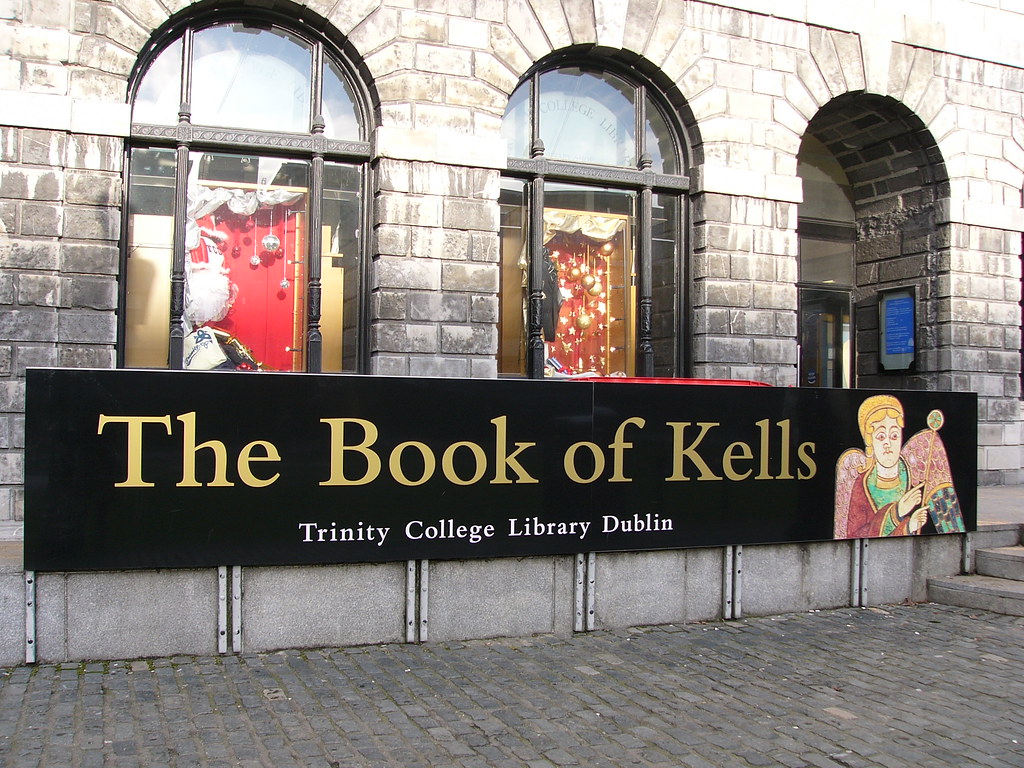Trinity unveiled its new Book of Kells display case in the Old Library in September, introducing a case that was exclusively designed by Goppion, an Italian manufacturing and design company that has created one of a kind display cases for the Mona Lisa, the Crown Jewels, and The Dead Sea Scrolls.
The Book of Kells is a manuscript Gospel book in Latin, which contains the four Gospels of the New Testament. For many years, it has been studied and has shed light on religious, economic, and social practices of the time, as well as being a lasting symbol of Irish nationality, culture, and creativity.
The new display has been designed to provide an enhanced viewing experience for tourists, but also to protect the manuscript from degradation. The most common causes of the deterioration of art and historical works are moist conditions, light exposure, air pollution, and accidental contact of the pages.
Technological advancements have allowed for art to be restored, but art restoration can be extremely expensive, and therefore is not always an option. The best way to protect works of art is through art conservation, which is the care and protection of cultural property.
“This initial assessment uses X-rays to gather information about the work’s composition, materials, the types of paints used, and what techniques were used on the work.”
When it comes to art conservation, it is necessary for art conservators to analyse the object which they are protecting. This initial assessment uses X-rays to gather information about the work’s composition, materials, the types of paints used, and what techniques were used on the work. Radiography is particularly beneficial because the radiation exposure to works of art is very low, and therefore non-intrusive.
This allows conservators to formulate an outline of what they are using and make note of what specific measures should be taken to protect the works of art. In addition, infrared reflectography can be used to see underdrawings and previous markings on the canvas, which gives great insight into the works of art themselves, as well as the history of the piece.
In the case of the Book of Kells, it is known that this manuscript is made of 340 folios made from calfskin vellum. A folio is an individual leaf of paper or parchment. Vellum is a prepared membrane, used as material for writing on. Because the vellum in the Book of Kells is made of calfskin, it is smooth and durable, but still susceptible to damage if preserved incorrectly.
Vellum must be stored in a stable environment with a constant temperature (ideally 20 ± 1.5°C) and 30% relative humidity. When stored somewhere with less than 11% relative humidity, it becomes fragile and brittle, and susceptible to mechanical stresses. If the humidity is too high, it becomes vulnerable to mould.
It should also be noted that lettering for the Book of Kells was created with iron gall ink. This ink, which is made by mixing tannins with iron sulphate, is acidic, and ultimately will create holes on the writing surface being used on. This is accelerated by high temperatures and humidity.
The temperature and levels of humidity are maintained via the new display case to protect the Book of Kells. The case ensures that the air exchange between the case’s exterior and interior is at a minimum. The airtightness allows for a stable micro-environment, preventing any severe changes to temperature and humidity.
“Temperature and humidity are not the only factors that can cause degradation to the Book of Kells.”
Temperature and humidity are not the only factors that can cause degradation to the Book of Kells. Exposure to light, periodic rotation and reducing movement of the piece are also factors in how well a work of art is preserved.
These were all factored in when designing the case. The new case allows for every page to be displayed on a rotating basis, meaning that the folios in the Book of Kells are all periodically rotated. Special lighting is also in place, which enhances the visitor’s experience.
Additionally, the Book of Kells is not to be moved from the case, but risks of earthquakes and shock are prevented with a variety of structural techniques. This is done by looking at different levels of shock absorption: the building’s underlying structure, the structure of the display case, and the individual mount for the manuscript. By allowing for anti-seismic devices, there is a prevention of risk to the manuscript via earthquakes and vibrations.
These measures put in place will hopefully help preserve the Book of Kells for many years to come.






